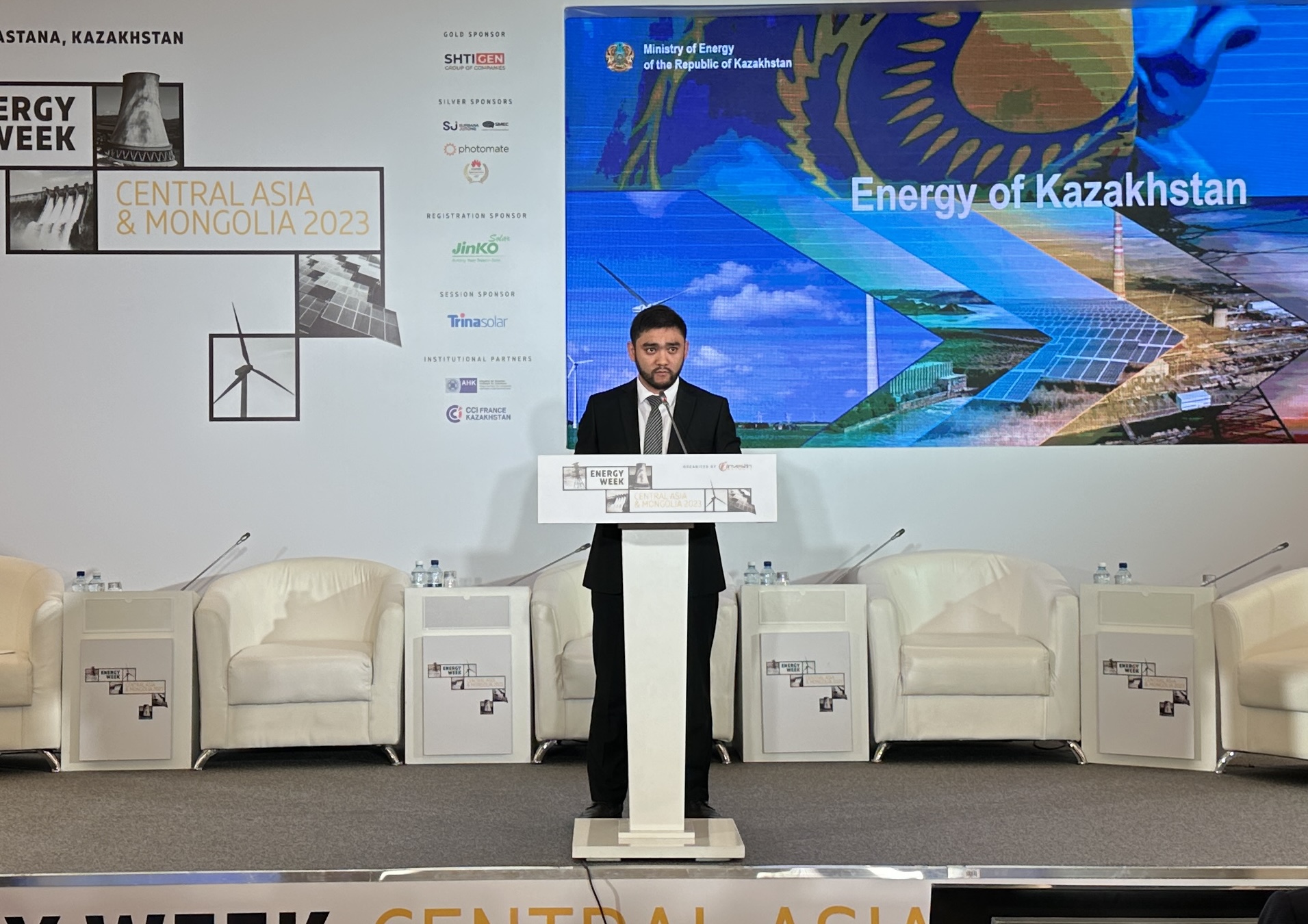ASTANA – Industry experts emphasized the importance of optimizing green financing, engaging the private sector, and regional integration to facilitate a green transition in Kazakhstan and the region at the Energy Week Central Asia and Mongolia event on Sept. 19.

Energy Week Central Asia and Mongolia gathered industry experts to discuss sustainable energy transition. Photo credit: The Astana Times.
The two-day event gathered government officials and energy companies from Kazakhstan, the Kyrgyz Republic, Mongolia, Tajikistan, and Uzbekistan, as well as international financial institutions and major multinational investors, to discuss the region’s path to net zero.
Zhaslan Каsenov, director of the atomic energy and industry department of the Kazakh Ministry of Energy, told participants that with vast land resources, Kazakhstan has significant potential for the development of wind, solar and hydropower.
“The climate in Kazakhstan is favorable for the development of wind power plants. According to expert estimates, the energy potential of wind energy is 920 billion kilowatt hours per year. As for the solar energy potential, in the southern regions of the country it is about 2,200-3,000 solar hours per year, making us competitive with the world’s sunniest countries. The total energy potential of hydropower in Kazakhstan is 170 billion kilowatt hours,” said Каsenov.

Zhaslan Каsenov represented the Kazakh Ministry of Energy at the event. Photo credit: The Astana Times.
Kazakhstan has pledged to hit net zero emissions by 2060 as part of a wide-ranging carbon neutrality strategy.
“As of today, 206 power plants, 74 conventional, 43 solar, 38 hydroelectric and 48 wind power plants produce electricity in Kazakhstan. The total installed capacity of power plants in Kazakhstan is 24.5 gigawatts,” added Каsenov.
By the end of 2022, electricity production reached 112.8 billion kilowatt hours.
“The share of generation by coal-fired plants was 66.7%, gas-fired plants 7.3%, large hydroelectric plants 21.5%, and renewable energy sources 4.5%,” said Каsenov.
Katarzyna Wawiernia, the United Nations Development Programme (UNDP) Resident Representative in Kazakhstan, cited recent research from the International Renewable Energy Agency (IRENA) indicating that decarbonization by 2050 could yield an eightfold return on investment.
“Governments face the choice: support fossil fuels and pay the costs in the future or invest in a green economy now,” she said.
“Decarbonization of the energy system is central to business and Kazakhstan has abundant renewable resources. To unlock this potential, we must secure the financing by bridging together public and private sectors,” Wawiernia said.
To accelerate the shift toward cleaner energy sources, “we need to get the financing right,” she added.
“According to experts, most of the investments in the transition will have to come from the private sector. Under the right conditions, we could use blended finance to fill the financing gap needed for the low carbon development path,” she suggested.
Wawiernia also mentioned that, according to the International Energy Agency, significant fossil fuel subsidies exist in over 40 countries, including Kazakhstan.
“These subsidies are not an efficient way to ensure affordable energy, because they incentivize wasteful fuel consumption that worsens air pollution and increases greenhouse gas emissions,” said Wawiernia.
British Ambassador to Kazakhstan Kathy Leach emphasized the role of regulatory frameworks and regional cooperation in facilitating the green transition.
She highlighted the importance of “both the top-down messages – strong political messages for a government to set the regulatory framework, but also the bottom-up measures to incentivize private business to both move away from fossil fuels and to invest in the green transition.”
Drawing on the experience of the United Kingdom, Leach said bringing consumers on board made a crucial impact on energy transition.
“Back in 2008 we had 2,000 small and medium renewable installations and that’s grown over the last 15 years to over a million and that includes rooftop solar or individual houses through to tidal power in the Orkney Islands, and biomass boilers for big hospitals and other enterprises,” said Leach.
Ainur Sospanova, chief executive officer at Qazaq Green Association, said renewable energy in Kazakhstan is an established energy sector.
“If a decade ago we were taking the first steps, today we have 2.5 gigawatts of capacity in the energy system. And the same amount of capacity is under construction, large contracts are being signed,” said Sospanova.
“I think that within the next decade, the energy mix will undergo a radical transformation. Specifically, coal-fired generation will significantly decrease, while new gas-fired generation facilities will emerge,” she added.
According to Sospanova, the Central Asian region and Mongolia should prioritize regional cooperation for the effective implementation of renewable energy sources.
“Historically, we have been part of a unified Central Asian energy network since the Soviet era. This interconnectedness can facilitate the seamless integration of renewable energy into the system and promote the development of Uzbekistan’s power industry based on renewable sources in Kazakhstan,” she said.
Sospanova also said that governments should not underestimate the power of small businesses and the private sector.
“An important aspect of renewable energy development is when consumers become generators. In other words, every household or small-to-medium-sized business could generate its own electricity using renewable energy sources. In urban areas, this could take the form of solar rooftops,” said Sospanova.
She also mentioned that the Mazhilis, the lower chamber of the Kazakh Parliament, is currently reviewing amendments to existing renewable energy legislation. These amendments are focused on promoting the development of small-scale energy generation based on renewable resources.


